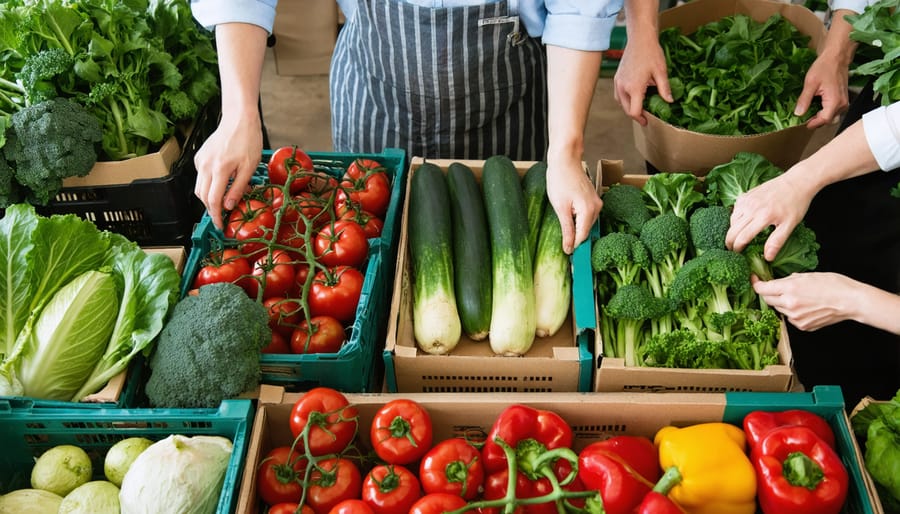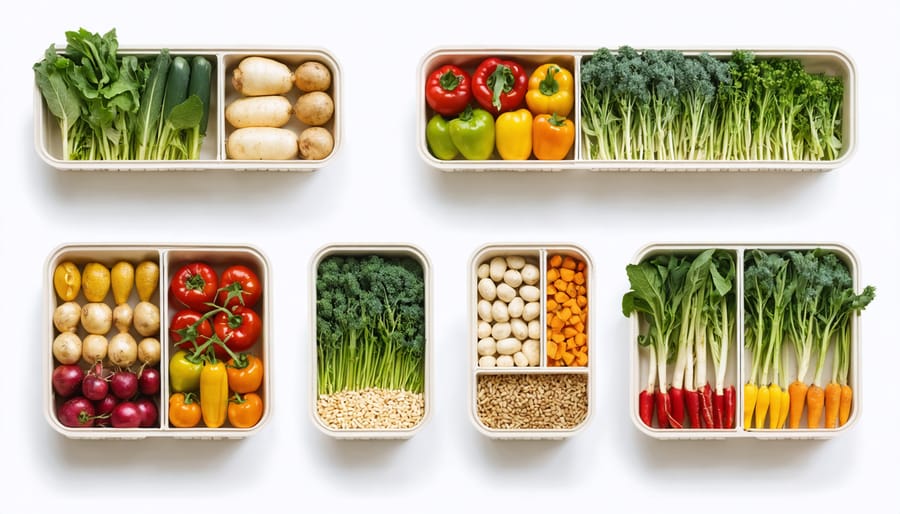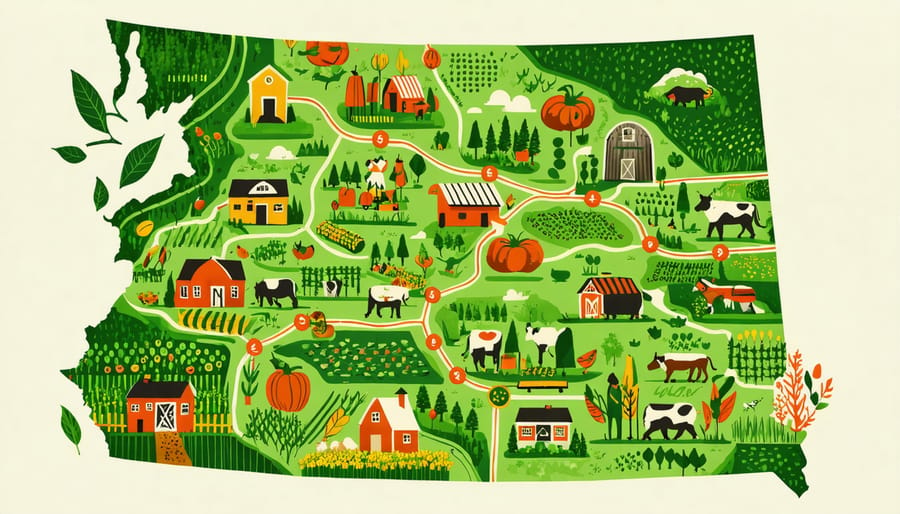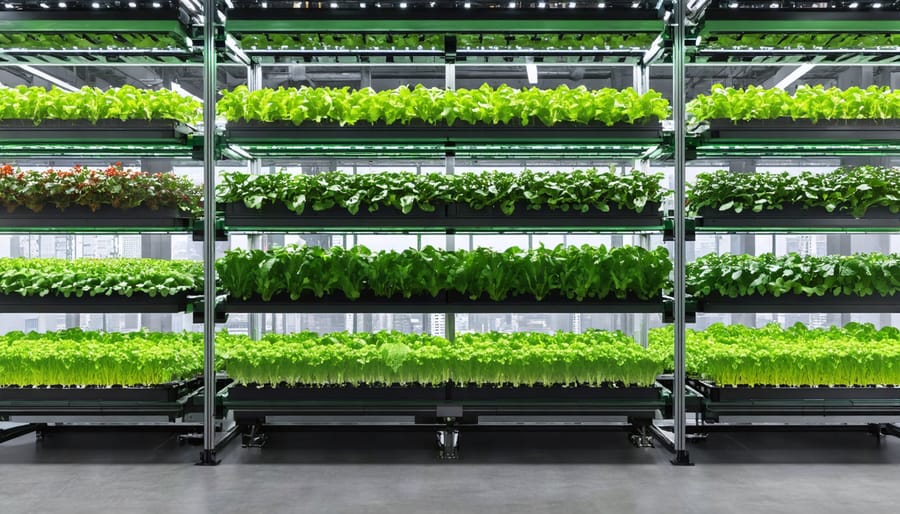Direct-to-consumer marketing transforms Canadian farm operations from commodity suppliers into trusted local food brands. By selling directly to customers through farmers’ markets, online platforms, and community-supported agriculture (CSA) programs, Alberta producers capture up to 80% more revenue compared to traditional distribution channels. Today’s consumers actively seek connections with local farmers, creating unprecedented opportunities for agricultural entrepreneurs to build sustainable, profitable businesses while strengthening regional food systems.
This shift toward direct marketing aligns perfectly with growing consumer demand for transparency, sustainability, and food security. Recent studies show that 73% of Canadian consumers prefer purchasing directly from farmers they know and trust. For Alberta producers, this represents a critical opportunity to diversify income streams, build resilient business models, and establish lasting relationships with their communities.
Successful direct-to-consumer marketing combines traditional agricultural expertise with modern digital tools, enabling farmers to tell their unique stories, showcase their sustainable practices, and connect with customers who value locally-grown food. Whether through weekend markets, farm-gate sales, or digital marketplaces, this approach puts producers in control of their pricing, branding, and customer relationships.
Building Your Farm’s Direct Sales Foundation
Digital Presence That Drives Farm Sales
In today’s digital age, your farm’s online presence is as crucial as your physical storefront. Start by creating a user-friendly website that showcases your products, tells your farm’s story, and makes it easy for customers to place orders. Include high-quality photos of your farm, produce, and family to build trust and connection with potential buyers.
Social media platforms like Instagram and Facebook are powerful tools for engaging with your community. Share regular updates about farm activities, harvest schedules, and behind-the-scenes glimpses of daily farm life. Remember to post consistently – aim for 3-4 times per week – and use relevant hashtags like #AlbertaAg and #LocalFood to increase visibility.
Email marketing remains one of the most effective digital tools. Build a subscriber list by offering incentives like early harvest notifications or exclusive recipes. Send monthly newsletters with seasonal updates, upcoming market dates, and featured products.
Consider implementing an online ordering system for farm pickup or local delivery. Many Alberta farmers have found success using platforms like Local Line or Square Online, which simplify the ordering process for both farmer and customer.
Don’t forget to maintain your Google Business Profile and encourage satisfied customers to leave reviews. According to Alberta Agriculture statistics, 78% of consumers research farms online before making their first purchase, making your digital reputation crucial for attracting new customers.
Keep your content authentic and personal – customers want to connect with the real people behind their food.
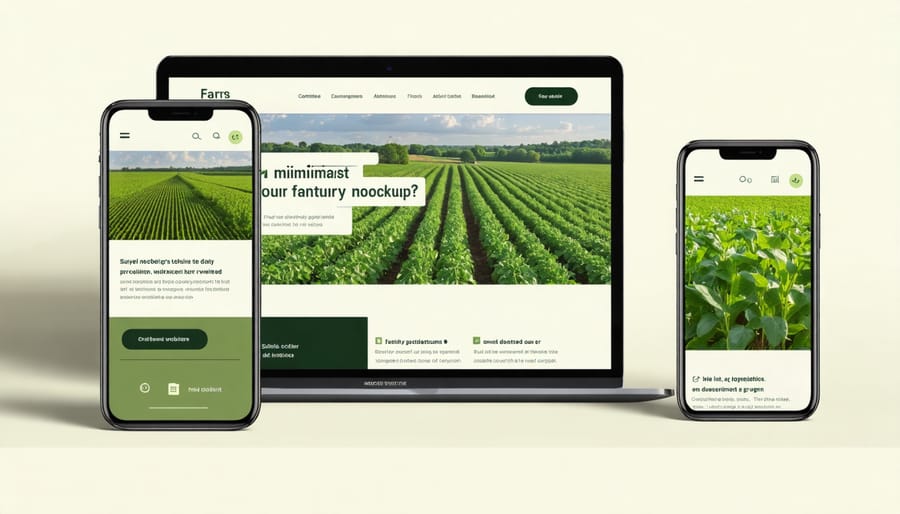
Your Farm’s Story: Marketing That Connects
In today’s digital age, authentic storytelling sets your farm apart from the competition. Your farm’s unique narrative isn’t just about what you grow – it’s about your values, your sustainable practices, and the people behind the produce. Many Alberta farmers have found success by sharing their journey through engaging social media posts, newsletters, and participating in local farm education initiatives.
Start by identifying what makes your operation special. Perhaps it’s your family’s multi-generational farming heritage, your innovative growing techniques, or your commitment to soil health. These distinctive elements form the foundation of your brand story.
When crafting your message, focus on the emotional connection between your farm and your customers. Share the daily rhythms of farm life, the challenges you overcome, and the joy of harvest time. Use clear, genuine language that reflects your personality while remaining professional.
Photos and videos are powerful tools for storytelling. Capture the changing seasons, showcase your sustainable practices, and introduce your team members. Remember to maintain consistency across all platforms – whether it’s your website, social media, or market stand signage.
Most importantly, let your customers see themselves in your story. Highlight how your farming practices benefit their families and the local community. Share recipes, cooking tips, and storage advice that help them make the most of your products.
Practical Sales Channels for Alberta Farmers
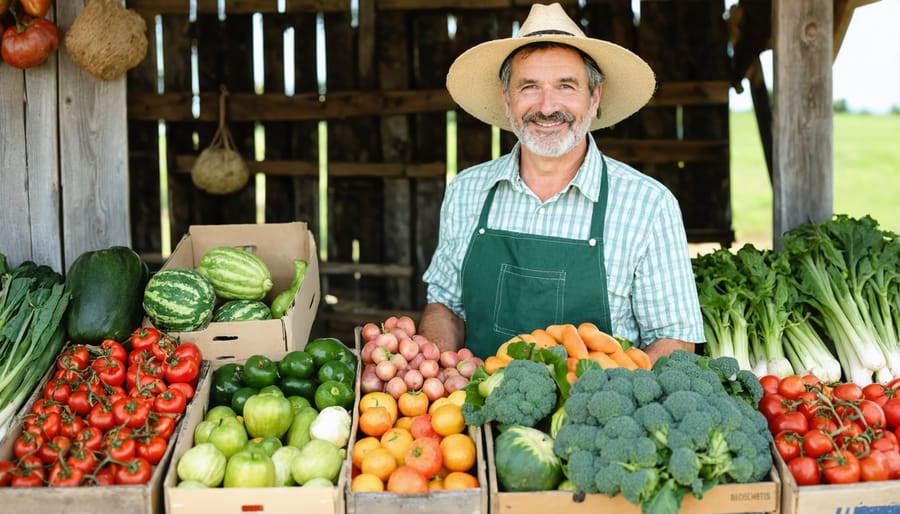
Farm Gate Sales Done Right
Setting up a successful farm gate operation requires careful planning and attention to detail. Start by creating a welcoming entrance with clear signage that’s visible from the road. Your farm gate should include adequate parking, preferably with a gravel or paved surface to accommodate vehicles in various weather conditions.
Design your sales area to be both functional and inviting. A covered structure like a small barn or large gazebo can protect products and customers from the elements while creating an authentic farm atmosphere. Install proper lighting and ensure the space is accessible for all customers, including those with mobility challenges.
Product presentation matters tremendously. Invest in attractive displays, clean containers, and proper refrigeration when needed. Clearly label all products with prices, weights, and any relevant certification information. Consider how successful local farm partnerships showcase their products and adapt those strategies to your setup.
Implement a reliable point-of-sale system that can handle various payment methods. Many Alberta farmers find success with mobile payment solutions that accept credit cards and tap payments. Keep detailed records of sales and inventory, and ensure you’re complying with all local health and safety regulations.
Remember to create clear operating hours and stick to them. Post your schedule prominently and maintain consistent availability during peak seasons. Consider offering pre-order options during busy periods to manage customer flow and ensure product availability.
Farmers’ Markets: Beyond the Basics
Success at farmers’ markets goes far beyond simply showing up with quality produce. To maximize your market presence, consider creating an eye-catching display that tells your farm’s story. Use wooden crates, rustic signage, and clear product labelling that highlights your sustainable farming practices and local roots.
Engage with customers by offering samples when possible and sharing quick serving suggestions or recipe cards. Consider creating themed displays that change with the seasons – from early spring greens to late autumn squash. This keeps your booth fresh and exciting for regular customers while highlighting peak-season produce.
Build relationships with other vendors and market organizers. These connections can lead to valuable cross-promotional opportunities and insights into other markets in the region. Many successful Alberta farmers participate in multiple markets throughout the week, carefully selecting locations that complement their schedule and target demographic.
Implement a point-of-sale system that accepts various payment methods, including tap payments and e-transfers. Today’s market customers expect convenience, and being prepared with multiple payment options can significantly boost sales.
Consider offering pre-order options for regular customers, especially for high-demand items like eggs or seasonal berries. This strategy has worked well for many Alberta farmers, helping to ensure consistent sales while building customer loyalty.
Remember to collect customer email addresses (with permission) to share updates about your market schedule, available produce, and special offers. This direct connection with customers helps maintain relationships beyond market days.

CSA Programs That Work
Successful CSA programs in Alberta demonstrate how farmers are building stronger local food communities while securing stable income streams. The key to a thriving CSA lies in thoughtful planning and member engagement.
Start by determining your farm’s capacity and optimal share size. Most successful Alberta CSAs offer 18-24 weeks of produce, with weekly shares designed to feed 2-4 people. Consider offering flexible payment plans, including monthly installments or early-bird discounts for full-season commitments.
Communication is crucial. Establish clear pickup locations and times, and create detailed share guides explaining what members can expect each season. Many prosperous CSAs use weekly newsletters to share recipes, farming updates, and storage tips. This education component helps members maximize their share value while fostering connection to the farm.
Value-added options can enhance your program’s appeal. Consider offering add-ons like farm-fresh eggs, local honey, or preserved goods. Some Alberta CSAs successfully incorporate U-pick options or member-only events, creating memorable experiences that boost retention rates.
Track member feedback through seasonal surveys and adjust your offering accordingly. Successful programs often report 80% or higher renewal rates by maintaining quality standards and responding to member preferences while staying true to sustainable farming practices.
Remember to start small and scale gradually. Many thriving CSAs began with 20-30 members before expanding to serve larger communities, ensuring quality and reliability remained consistent throughout their growth.
Technology Tools for Direct Farm Marketing
E-commerce Solutions for Farm Products
In today’s digital marketplace, establishing a robust e-commerce presence is essential for farm-direct sales. Many Alberta farmers have successfully integrated online ordering systems that complement their year-round local food production efforts, making it easier for customers to access fresh produce and farm products.
Start with a user-friendly website platform like Shopify, Local Line, or Square Online, which offer agriculture-specific features. These platforms typically include inventory management tools, allowing you to update product availability in real-time as harvests come in. Consider implementing a pre-order system for seasonal items, helping you better plan harvests and reduce waste.
For payment processing, choose systems that Canadian customers trust, such as Interac e-Transfer, major credit cards, and mobile payment options. Many Alberta farmers find success with a hybrid approach, combining online payments with in-person transactions at farmers’ markets.
Include clear product descriptions, high-quality photos, and transparent pricing. Consider offering various package sizes and subscription boxes for regular customers. Implement a simple checkout process with multiple delivery options, including farm pickup and local delivery within your service area.
Remember to maintain accurate inventory counts and set realistic order fulfillment times based on your harvest schedule. Many successful farms use automated email notifications to keep customers informed about their orders and upcoming seasonal availability.
Customer Management Systems That Grow Sales
Managing customer relationships effectively is crucial for growing your direct-to-consumer farm business. Today’s digital tools make it easier than ever to keep track of customer preferences, maintain communication, and boost repeat sales.
Many Alberta farmers have found success using Customer Relationship Management (CRM) systems designed specifically for agricultural businesses. These systems help track everything from customer purchase history to delivery preferences, making it simpler to provide personalized service.
Popular options include MailChimp for email marketing and customer tracking, which many local farmers find user-friendly and affordable. Farmigo offers specialized features for CSA management, while Square’s system works well for farmers’ market vendors who need to track both in-person and online sales.
Remember to collect essential information like:
– Purchase history and preferences
– Delivery or pickup preferences
– Communication preferences
– Special dietary requirements
– Farm visit participation
Local farmer Sarah Thompson from Red Deer shares, “Using a CRM has helped us increase our CSA member retention rate by 40%. We can now send targeted communications about products our customers actually want.”
Consider starting with a simple spreadsheet if you’re new to customer management. As your customer base grows, graduate to more sophisticated systems that can automate communications and track sales patterns. The key is choosing a system that you’ll actually use consistently.
Remember to comply with Canadian privacy laws when collecting and storing customer information, and always be transparent about how you’ll use their data.
Real Success: Alberta Farm Case Studies
Meet the Petersons of Sundre Valley Farm, who transformed their traditional cattle operation into a thriving direct-to-consumer business. Starting with just 20 regular customers in 2018, they now serve over 200 families through their monthly meat subscription program. Their success came from building personal relationships with customers and leveraging social media to share their farming story.
In Leduc County, Sarah Mitchell’s Berry Farm switched from wholesale to direct marketing in 2019. By offering U-pick experiences and farm-to-table events, they increased their profit margins by 40%. “People don’t just come for the berries anymore,” Sarah explains. “They come for the experience and the connection to where their food comes from.”
The Golden Acres Market Garden, run by the Wong family near Okotoks, demonstrates the power of diversification in direct marketing. They combine traditional farmers’ market sales with an innovative online ordering system and weekly vegetable boxes. Their approach to marketing through cooking demonstrations and seasonal recipes has helped them maintain a 95% customer retention rate.
Perhaps most inspiring is the story of Twin Brooks Dairy, where the Anderson family shifted from conventional milk distribution to on-farm processing and direct sales. They now produce specialty cheese and yogurt products, selling directly to customers through their farm store and local food hub partnerships. Their revenue has doubled since implementing this strategy three years ago.
These success stories share common elements: strong customer relationships, effective use of digital tools, value-added products, and authentic storytelling. Each farm found unique ways to connect with their community while maintaining the integrity of their agricultural practices. They prove that direct-to-consumer marketing isn’t just about selling products – it’s about creating sustainable businesses that benefit both farmers and consumers in Alberta’s agricultural landscape.
Direct-to-consumer marketing offers Alberta farmers a powerful way to build sustainable businesses while connecting meaningfully with their communities. By focusing on authentic relationships, quality products, and strategic digital presence, you can create a thriving direct marketing channel that benefits both your farm and your customers. Start small by choosing one or two strategies that align with your farm’s capabilities, whether that’s farmers’ markets, social media engagement, or farm visits. Remember to leverage local networks, maintain consistent communication with your customer base, and continuously gather feedback to improve your offerings. Success in direct marketing isn’t just about sales—it’s about creating lasting connections with consumers who value knowing where their food comes from and supporting local agriculture. Take that first step today by implementing these strategies, and join the growing community of Alberta farmers who are successfully marketing directly to consumers.



